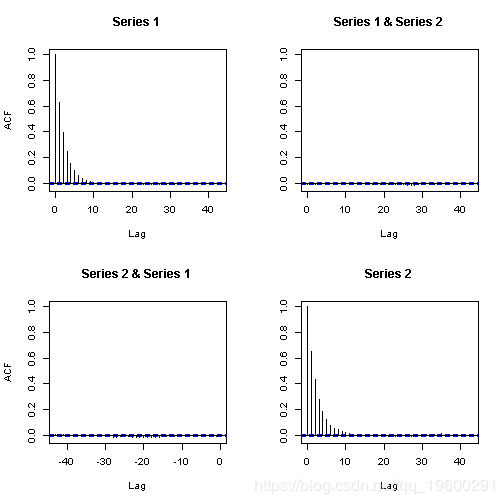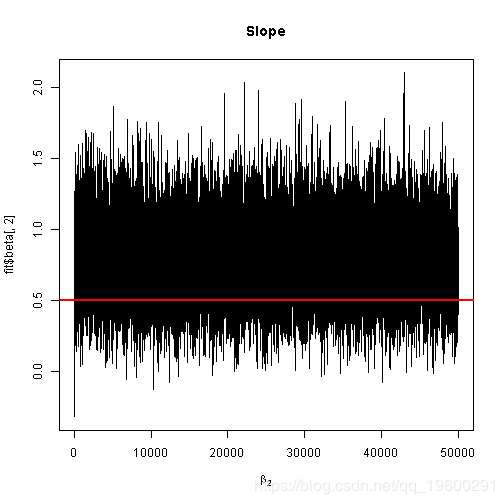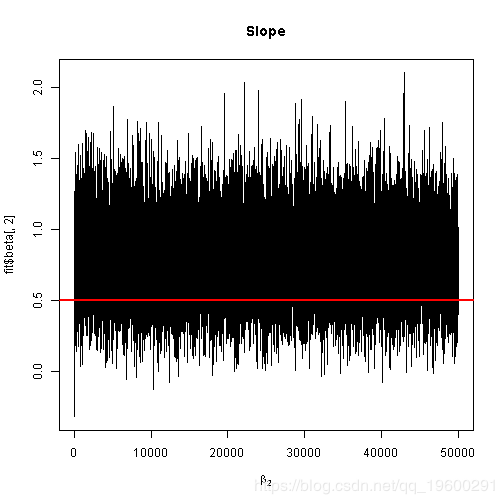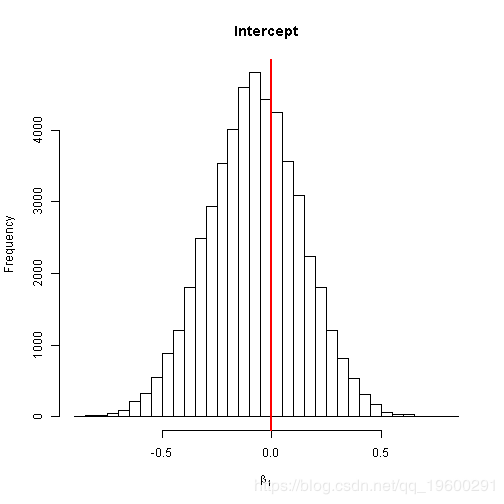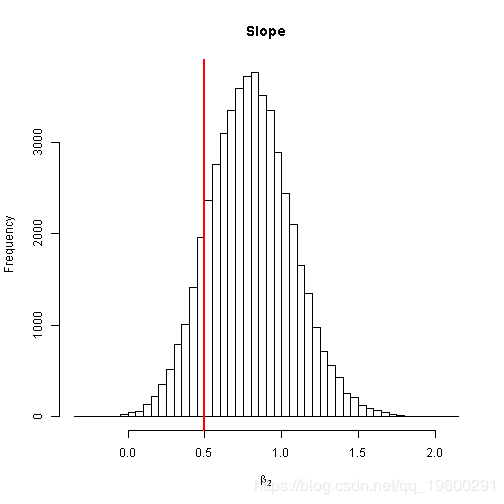拓端tecdat|R语言代写使用Metropolis- Hasting抽样算法进行逻辑回归
在逻辑回归中,我们将二元响应\(Y_i \)回归到协变量\(X_i \)上。下面的代码使用Metropolis采样来探索\(\ beta_1 \)和\(\ beta_2 \)的后验YiYi到协变量XiXi。让
定义expit和分对数链接函数
logit<-function(x){log(x/(1-x))} 此函数计算\((\ beta_1,\ beta_2)\)的联合后验。它返回后验的对数以获得数值稳定性。(β1,β2)(β1,β2)。它返回后验的对数以获得数值稳定性。
log_post<-function(Y,X,beta){
prob1 <- expit(beta[1] + beta[2]*X)
prior <- sum(dnorm(beta,0,10,log=TRUE))
like+prior}
这是MCMC的主要功能.can.sd是候选标准偏差。
Bayes.logistic<-function(y,X,
n.samples=10000,
can.sd=0.1){
keep.beta <- matrix(0,n.samples,2)
keep.beta[1,] <- beta
acc <- att <- rep(0,2)
for(i in 2:n.samples){
for(j in 1:2){
att[j] <- att[j] + 1
# Draw candidate:
canbeta <- beta
canbeta[j] <- rnorm(1,beta[j],can.sd)
canlp <- log_post(Y,X,canbeta)
# Compute acceptance ratio:
R <- exp(canlp-curlp)
U <- runif(1)
if(U<R){
beta <- canbeta
acc[j] <- acc[j]+1
}
}
keep.beta[i,]<-beta
}
# Return the posterior samples of beta and
# the Metropolis acceptance rates
list(beta=keep.beta,acc.rate=acc/att)}
生成一些模拟数据
set.seed(2008)
n <- 100
X <- rnorm(n)
true.p <- expit(true.beta[1]+true.beta[2]*X)
Y <- rbinom(n,1,true.p)
适合模型
burn <- 10000
n.samples <- 50000
fit <- Bayes.logistic(Y,X,n.samples=n.samples,can.sd=0.5)
tock <- proc.time()[3]
tock-tick
## elapsed
## 3.72
结果
fit$acc.rate # Acceptance rates
## [1] 0.4504290 0.5147703
acf(fit$beta)
abline(true.beta[1],0,lwd=2,col=2)
abline(true.beta[2],0,lwd=2,col=2)
hist(fit$beta[,1],main="Intercept",xlab=expression(beta[1]),breaks=50)
hist(fit$beta[,2],main="Slope",xlab=expression(beta[2]),breaks=50)
abline(v=true.beta[2],lwd=2,col=2)
print("Posterior mean/sd")
## [1] "Posterior mean/sd"
print(round(apply(fit$beta[burn:n.samples,],2,mean),3))
## [1] -0.076 0.798
print(round(apply(fit$beta[burn:n.samples,],2,sd),3))
## [1] 0.214 0.268
print(summary(glm(Y~X,family="binomial")))
##
## Call:
## glm(formula = Y ~ X, family = "binomial")
##
## Deviance Residuals:
## Min 1Q Median 3Q Max
## -1.6990 -1.1039 -0.6138 1.0955 1.8275
##
## Coefficients:
## Estimate Std. Error z value Pr(>|z|)
## (Intercept) -0.07393 0.21034 -0.352 0.72521
## X 0.76807 0.26370 2.913 0.00358 **
## ---
## Signif. codes: 0 '***' 0.001 '**' 0.01 '*' 0.05 '.' 0.1 ' ' 1
##
## (Dispersion parameter for binomial family taken to be 1)
##
## Null deviance: 138.47 on 99 degrees of freedom
## Residual deviance: 128.57 on 98 degrees of freedom
## AIC: 132.57
##
## Number of Fisher Scoring iterations: 4
如果您有任何疑问,请在下面发表评论。
大数据部落 -中国专业的第三方数据服务提供商,提供定制化的一站式数据挖掘和统计分析咨询服务
统计分析和数据挖掘咨询服务:y0.cn/teradat(咨询服务请联系官网客服)
【服务场景】
科研项目; 公司项目外包;线上线下一对一培训;数据爬虫采集;学术研究;报告撰写;市场调查。
【大数据部落】提供定制化的一站式数据挖掘和统计分析咨询

欢迎选修我们的R语言数据分析挖掘必知必会课程!
欢迎关注微信公众号,了解更多数据干货资讯!

▍关注我们
【大数据部落】第三方数据服务提供商,提供全面的统计分析与数据挖掘咨询服务,为客户定制个性化的数据解决方案与行业报告等。
▍咨询链接:http://y0.cn/teradat
▍联系邮箱:3025393450@qq.com

